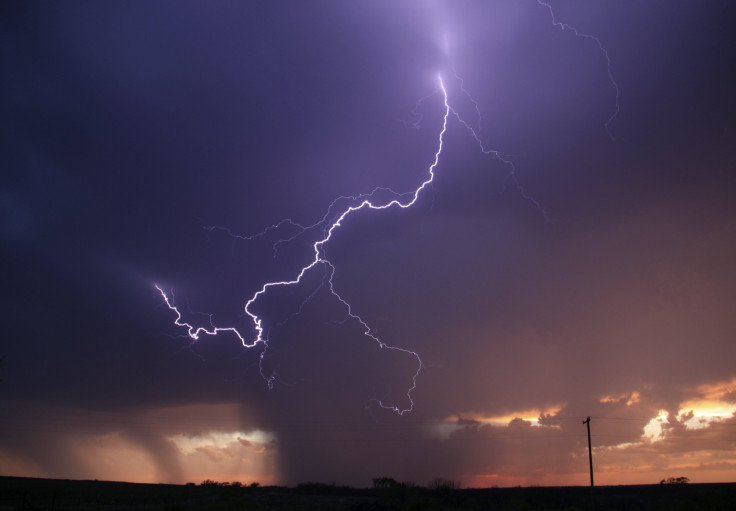Can Solar Winds Trigger Lightning On Earth? Study Reveals ‘Subtle’ Influences Of Sun On Weather

Scientists have long speculated that cosmic rays from outer space trigger lightning on Earth, but new research adds another element to the mix: the sun.
For the first time, British researchers have drawn a connection between the sun’s solar winds and their effect on thunderstorm activity here on Earth.
The new study, published Wednesday in the journal Environmental Research Letters, states that high-energy particles from the sun may have enough force to penetrate Earth’s magnetosphere, the web of magnetic fields that envelope our planet, and increase lightning events.
“It’s apparent that the sun is a major influence on our weather. But there are subtle, secondary effects,” lead researcher Chris Scott from the University of Reading's Department of Meteorology said in a statement. “We have found evidence that high-speed solar wind streams can increase lightning rates.”
As the sun rotates every 27 days, material known as solar wind bursts from the sun and streams into space at a speed of about 400 to 800 kilometers a second, according to Scott. These constant jets of energetic particles – mainly electrons and protons – pass by Earth with predictable regularity.
To study the correlation between solar wind and thunderstorms, researchers analyzed data of lightning events in the UK between 2000 and 2005. They compared the incidences of lightning strikes with solar wind measurements from NASA.
They discovered that following bursts of solar wind, there were, on average, roughly 100 more thunderstorms in the 40 days after the solar wind event than in the 40 days before it. Lightning strikes peaked between 12 and 18 days after the arrival of the solar wind, according to researchers.
“Cosmic rays, tiny particles from across the universe accelerated to close to the speed of light by exploding stars, have been thought to play a part in thundery weather down on Earth, but our work provides new evidence that similar, if lower-energy, particles created by our own sun also affect lightning,” Scott said in a statement.
Exactly how the sun affects various weather phenomena on our planet is still somewhat of a mystery. We know that the sun, our primary energy source, constantly bombards Earth with solar radiation that reacts with our atmosphere – the aurora borealis is probably the best example we have of this – but attempts to find specific correlations between changes in Earth’s weather and solar variability have fallen short.
© Copyright IBTimes 2024. All rights reserved.






















